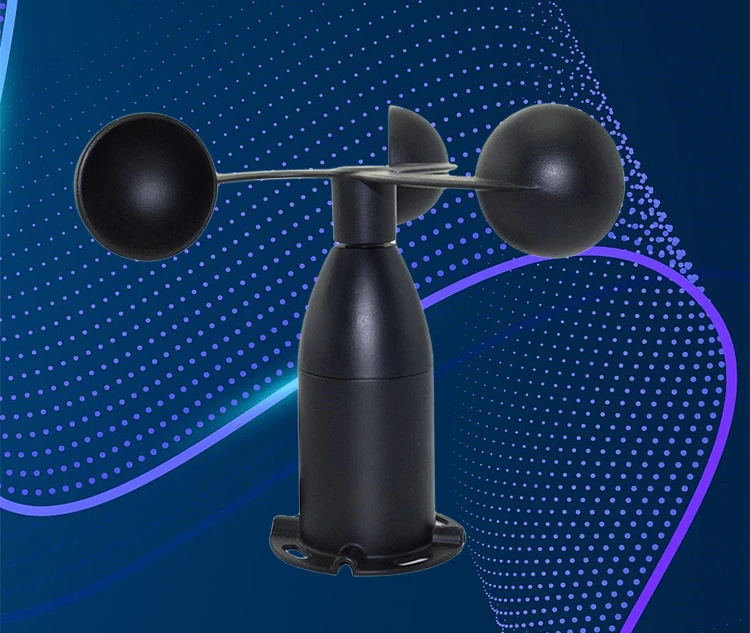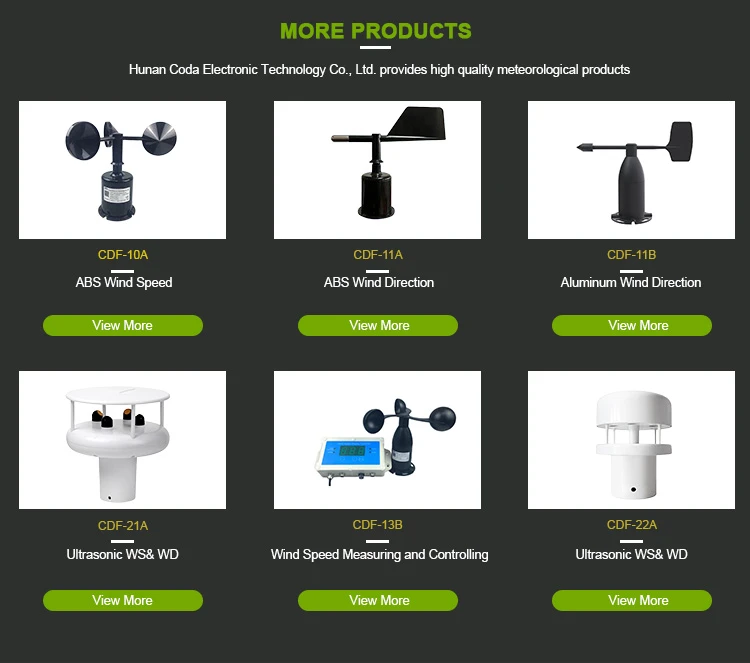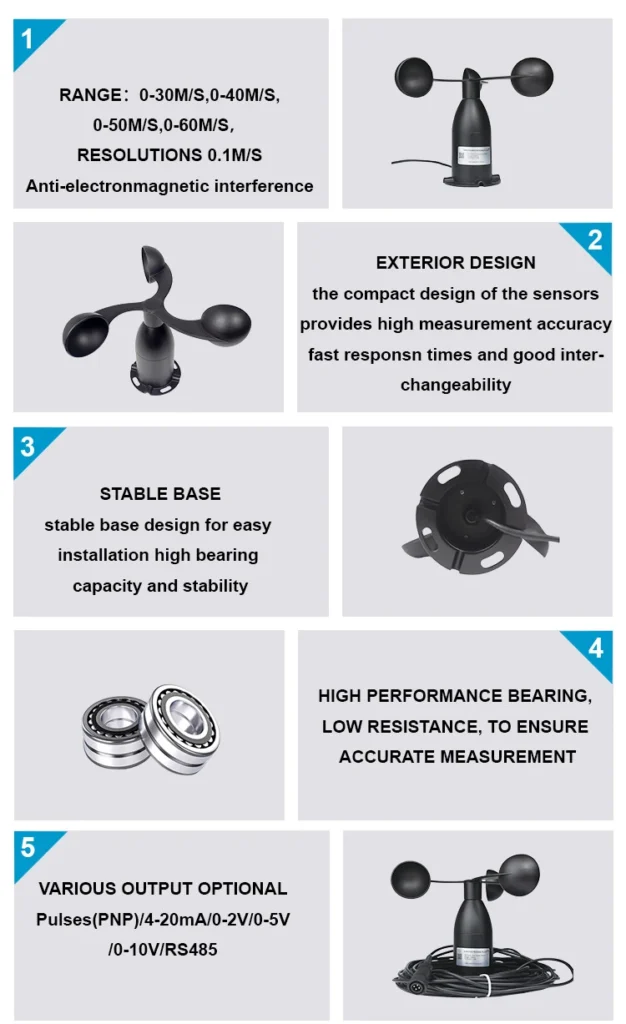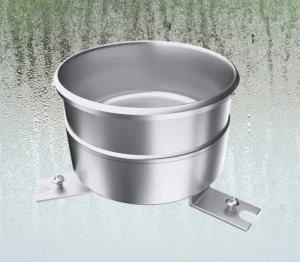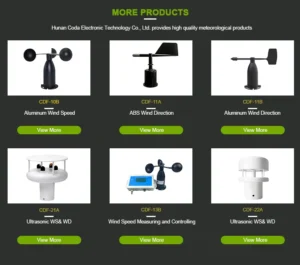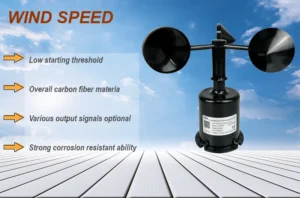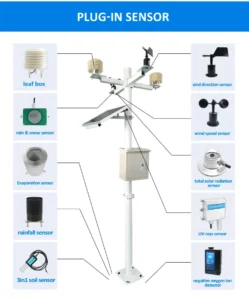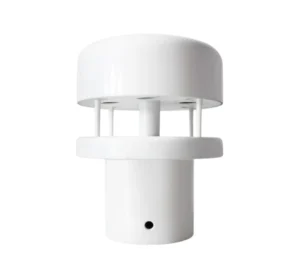Why Are Cup Anemometers a Cornerstone of Meteorological Research?
Cup anemometers are important tools in weather research. They can measure wind speed and direction accurately. Essential for weather forecasting, climate analysis, and other atmospheric studies, these devices are crucial for gathering quality wind data. Cup anemometers have three or four cups that spin on a vertical shaft. They use sensors to measure wind speed and direction. Below, we delve into the key reasons why cup anemometers continue to be indispensable tools for meteorologists.
Reasons for Widespread Use of Cup Anemometers
Exceptional Accuracy in Wind Measurements
One of the primary benefits of cup anemometer is their precise ability to measure wind speed. Their design ensures they capture even minute variations in wind velocity with high fidelity. By combining advanced mechanical systems with reliable sensor technologies, these anemometers consistently provide dependable data. This accuracy is paramount in meteorological research, where even minor inconsistencies in measurements could impact outcomes such as weather predictions or climate models.
Durability and Dependability
Another significant strength of cup anemometers is their robust construction and reliability. Manufacturers usually make these tools from strong materials like stainless steel or aluminum. They can handle extreme weather for a long time. Their simple mechanical design—with few moving parts—reduces the likelihood of breakdowns, ensuring uninterrupted data collection. This reliability minimizes maintenance needs, allowing researchers to focus on data analysis without frequent equipment concerns.
Versatile Wind-Speed Measurement Range
Cup anemometers are highly versatile, able to measure wind speeds spanning calm breezes to powerful gusts. This flexibility helps in studying wind patterns. It is useful in different climates and during extreme weather events, such as hurricanes or tornadoes. Their ability to adapt to various wind conditions is important. This skill helps in studying global weather patterns. It also aids in understanding local weather events.
Ease of Installation and Low Maintenance Requirements
The straightforward installation process of cup anemometers contributes to their widespread use. You can easily mount them on different platforms like weather towers, ships, or planes. You usually place them high up to avoid interference from obstacles. Maintenance mainly involves occasional inspections and cleaning, making them cost-effective for long-term use. These practical advantages enhance their appeal as reliable tools for field researchers.
Data Compatibility and Integration Potential
An additional benefit is that cup anemometers produce data in standardized formats, facilitating compatibility with numerous meteorological systems. The devices collect data on wind speed and direction. This data can easily fit into larger networks or databases. This allows for efficient analysis and comparison with other tools. This capability strengthens the development of comprehensive weather models and improves the accuracy of forecasts, benefitting both researchers and the general public.
Advancements in Cup Anemometer Technology
Thanks to ongoing innovation, modern cup anemometers have become even more efficient and trustworthy. These advancements contribute to their consistent use across meteorological applications and beyond. Key improvements include:
Enhanced Aerodynamic Designs
Work to improve the aerodynamic efficiency of cup anemometers has reduced errors from wind turbulence and mechanical issues. Newer models can keep high precision in tough conditions. They do this by optimizing the size and shape of the cups. They also reduce interference from the rotating shaft.
Electronic Data Logging
In the past, cup anemometers relied on manual data collection and analysis, a process prone to errors and inefficiencies. Recent technological advancements have introduced electronic data logging systems that automatically record wind speed and direction at predefined intervals. This innovation not only streamlines data collection but also minimizes human error, significantly boosting accuracy and effectiveness.
Advanced Materials and Lightweight Construction
The introduction of lightweight materials, such as carbon fiber composites, has transformed the design and functionality of cup anemometers. These materials enhance measurement precision by reducing rotational inertia, while their portability simplifies transportation and installation. Using lightweight parts reduces wind load effects. This helps the devices perform accurately, even in strong winds.
Remote Monitoring Capabilities
Wireless technology and IoT let us check and control cup anemometers from far away. This advancement allows meteorologists to get real-time wind data from many devices in large networks. This greatly improves the accuracy and coverage of weather monitoring.
Conclusion
Cup anemometers remain an essential instrument in meteorological research due to their precision, durability, adaptability, and seamless compatibility with other tools and systems. They give important information about wind behavior, climate trends, and weather patterns. This helps scientists study atmospheric events. Continuous innovations, including enhancements in aerodynamics, electronic data logging, lightweight materials, and remote monitoring technology, underscore their enduring value. Cup anemometers help make weather forecasts more accurate. They play an important role in saving lives and supporting communities worldwide.
